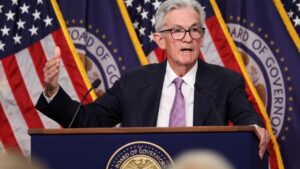As experts in the field of Business News, we at Extreme Investor Network aim to provide our readers with unique insights and valuable information that will help them stay ahead in the world of finance. Today, we will be discussing the impact of falling interest rates on the banking industry and what it means for investors.
When the Federal Reserve cut its benchmark rate by half a percentage point last month, it signified a shift in the economic landscape. This move was seen as a positive sign for banks, as lower rates tend to slow down the migration of money from checking accounts to higher-yielding options. However, the road ahead may not be smooth, as concerns over inflation could lead the Fed to adjust its rate-cut projections.
Analysts are closely watching for guidance from banks like JPMorgan Chase, which is set to report its earnings soon. The focus will be on net interest income (NII) and how the banks are navigating the changing rate environment. While all banks are expected to benefit from the Fed’s easing cycle, the timing and magnitude of that shift remain uncertain.
For large banks, NII is expected to decline in the short term due to tepid loan growth and a lag in deposit repricing. Some banks may see their margins take a hit as assets reprice down faster than deposits. However, lower rates are expected to benefit Wall Street operations, as deal volumes tend to increase when rates are falling.
Regional banks, on the other hand, are seen as bigger beneficiaries of falling rates, especially after facing pressure from higher funding costs when rates were climbing. Analysts have upgraded their ratings on banks like US Bank and Zions, while cutting recommendations on others like JPMorgan. It will be interesting to see how these banks navigate the changing rate environment and what it means for their future performance.
At Extreme Investor Network, we strive to provide our readers with valuable insights and unique perspectives on the latest business news. Stay tuned for more updates on the financial world and how it impacts your investment decisions.

